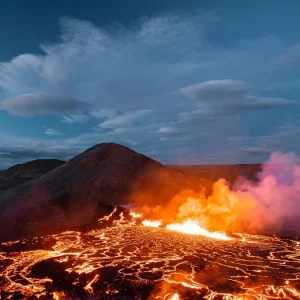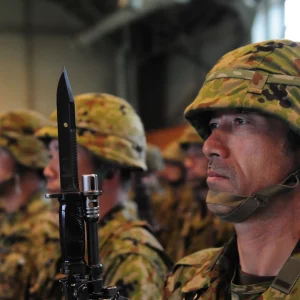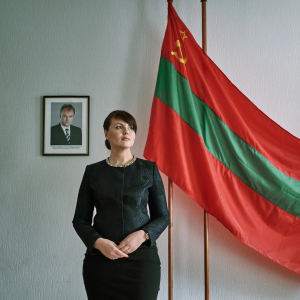
BY GIACOMO TOGNINI
On the 4th of January 2011, smoke billowed along the streets of Sidi Bouzid, Tunisia following the self-immolation of Mohamed Bouazizi, a 26-year old fruit vendor. Impoverished by rising food prices and beaten by corrupt police, Bouazizi’s display of revolt shook and subsequently toppled the regime of Tunisian President Zine El Abidine Ben Ali. Ali’s fall provided the literal spark that set off a wave of revolutionary unrest we have come to know as the Arab Spring.
Two years and three ousted leaders later, gunshots rang through El Menzah, a suburb of Tunis, on February 6th, 2013. Chokri Belaïd, a popular left-wing opposition leader was assassinated by unknown assailants. Unlike the death of Bouazizi, Belaïd’s untimely passing darkened the political mood.
The concurrent rise of the Ansar al-Sharia movement, a Salafist terror group with connections across the Maghreb, threatened to derail the country’s work-in-progress democracy. A political crisis raged between the “mildly Islamist” government of Ennahda, elected in 2012, and the secular left-wing opposition supported by many of Tunisia’s youth.
Today, Tunisia is once again at the vanguard of revolutionary change in the Middle East. A caretaker administration led by former Minister of Industry Mehdi Jomaa assumed power and continued work on the long-delayed constitution, potentially ending the debilitating political crisis. On the 27th of January 2014 the National Constituent Assembly, the Tunisian legislative body, adopted a new constitution widely considered to be fair and democratic by several foreign leaders and the European Council that safeguards basic freedoms and the rights of women and minorities.
The document recognizes Islam as the state religion but protects other forms of worship and, a first for Tunisia, recognizes men and women as equals. Jomaa’s new technocratic cabinet hopes that the passage of the constitution and the end of the political crisis will allow for investment that could end an economic crisis that stretches back to Ben Ali’s reign.
This constitutional declaration is significant because it was made possible by Tunisian unique culture and history, which is far removed from that of other Arab states. The Tunisian state has been nominally Islamic but secular in practice since its founding father, Habib Bourguiba, established the Tunisian “republic” in 1957 around his personality cult, pushing Islam somewhat to the sidelines. The 1959 constitution went so far as to dismiss sharia as the basis for Tunisian law. The Muslim Brotherhood, despite a history of activity and an underground political presence in the form of Ennahda, never enjoyed the strong social position that it still receives in Egypt, where it, and not the state, is recognized as the primary source of social services such as healthcare and education. These differences have led Tunisian culture to have far more distinct boundaries between society and religion than what exists in other Arab states.
Tunisian women’s relatively elevated place in society can also be traced to its post-independence history. Bourguiba extended the rights to higher education, divorce, and equal employment opportunities to women immediately upon Tunisian independence. His insistence that an Islamic society and a society in which women are valued and given equal rights are not only compatible, but are inseparable, gave rise to a very different society.
In 2011, Tunisia’s successful revolution inspired belief in other young Arabs that regime change truly was possible. In 2014, Tunisia’s ability to overcome political deadlock and produce a constitution based on national consensus can reinvigorate the moribund constitutional processes in Egypt and Libya.
Political deadlock and a lack of security have undermined the progress of democracy in Tunisia’s neighbors. Next door in Libya, an array of threats – jihadist, separatist, militia, sectarian, and pro-Gaddafi – posed a serious challenge to the fledgling transitional government still struggling to establish order after the defeat of Gaddafi in late 2011. And Egypt, long the focal point of the Arab world, stagnated under the Muslim Brotherhood’s mismanagement following their sweeping victory in the 2012 elections.
Despite taking a full three years, Tunisia’s political leaders and ideologically disparate political parties came together to create an imperfect document that nonetheless establishes the basis for a thriving democracy, even promising to protect the rights of minorities, notably Jews and Christians.
“The reason Tunisia succeeded was its participative process that produced a national consensus,” said Lobna Jeribi, a Tunisian MP for the center-left Ettakatol party. “The other countries of the Arab Spring should gain inspiration from Tunisia’s constitutional process.”
Egypt also recently produced a constitution, albeit without anything even approaching a “participative process”. Egypt’s military and secular leaders drafted it without the input and with the explicit opposition of the country’s largest organized political force, the Muslim Brotherhood. The result was a document that, while being broadly secular, is at odds with the view of a vast number of citizens.
Tunisia’s constitution enshrines rights and responsibilities that most Tunisians can agree to: a commitment to Islam shared with equal rights for all. In Egypt, the opinion of the few is being imposed on the many, an action that is already having negative consequences with the rise of Ansar Beit al-Maqdis, a violent jihadist group operating in the Sinai and Cairo proper.
Egypt’s constitution, which was approved in a referendum on the 15th of January 2014 by 98% of voters with around 38% voter turnout, contains many of the same articles as Tunisia’s, including protection for the rights of women and minorities. It replaced a Muslim Brotherhood-crafted constitution that also passed a referendum in 2013, albeit with even less voter participation. The issue with Egypt’s documents is that neither was produced with a national consensus. The 2013 constitution was written entirely by Islamist members of parliament with little regard to secular Egyptians and the interests of the army. In contrast, the 2014 constitution fails to include the ideas and beliefs of the Muslim Brotherhood, which can conceivably claim to have the support of around half of Egypt’s population.
To Tunisia’s south, on the other hand, there exists a genuine national consensus on secular principles and willingness for dialogue. In Libya, a government that includes women, Berbers, and representatives from other regional and ethnic groups is forging ahead with its mission to create a functioning democracy from the ashes of Gaddafi’s intensely personalized dictatorship.
However, unlike Tunisia’s successful campaign against Ansar al-Sharia, Libya’s weak government has struggled to exert control over the myriad militias that helped defeat Gaddafi but have since refused to submit to the government’s authority. Separatist and ethnic armed groups are sprouting as well, and rogue elements still loyal to the late leader’s family continue to attack state institutions and representatives.
“In the absence of a constitution, there is no recognition of what the government is supposed to do and what the people’s responsibilities are,” said Ali Aujali, former Libyan ambassador to the United States. “The main issue is security: we must create the right environment for democracy,” he adds.
Without security, a genuine political consensus, and a willingness to consider the will of the people, it will be impossible for post-revolutionary Arab states to fulfill their goal of a prosperous, working democracy. Tunisia’s history may have contributed to what has been a smoother path while other nations face the same issues in order to democratize.
Tunisia has been able, so far, to tentatively achieve all of these conditions. Hopefully its success will, like its heady revolutionary days in 2011, inspire change across the Middle East.





Be First to Comment